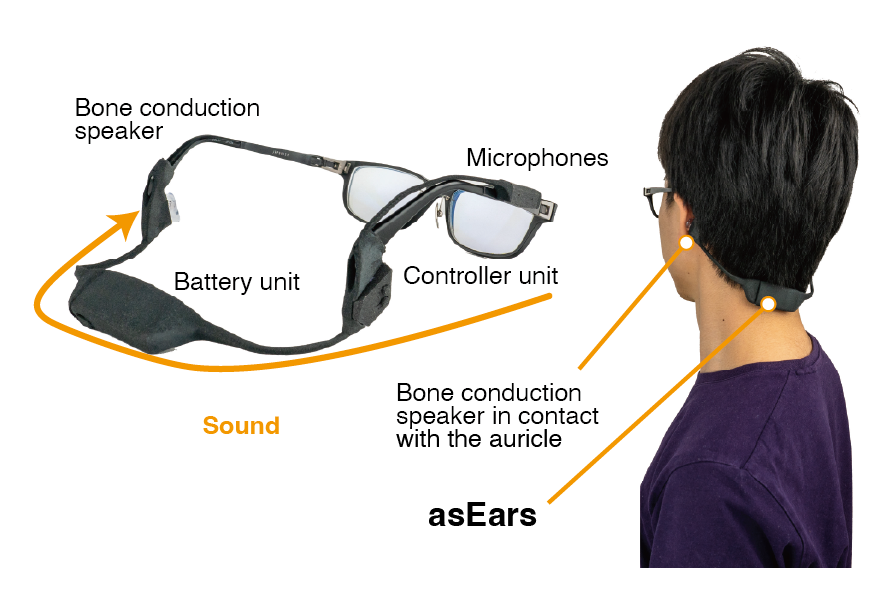 片耳難聴は、聞こえない側の会話が聞き取りにくいため、社会参画に支障がある。しかし、補聴器の普及率は4%に留まっている。そこで、著者2名を含む53名の片耳難聴者と共に、眼鏡に装着する骨伝導デバイスを設計・開発した。提案したデバイスと従来のCROS補聴器を比較する4週間の日記調査を行った結果、提案した装置は、有効性、社会的受容性などから、片耳難聴者にとってより受け入れられやすいことを示した。
片耳難聴は、聞こえない側の会話が聞き取りにくいため、社会参画に支障がある。しかし、補聴器の普及率は4%に留まっている。そこで、著者2名を含む53名の片耳難聴者と共に、眼鏡に装着する骨伝導デバイスを設計・開発した。提案したデバイスと従来のCROS補聴器を比較する4週間の日記調査を行った結果、提案した装置は、有効性、社会的受容性などから、片耳難聴者にとってより受け入れられやすいことを示した。
Single-sided deafness (SSD) significantly restricts social participation in hearing/speaking cultures due to the person’s difficulty hearing conversations on their deaf side. Although hearing aids for SSD are effective in social situations, the acceptance rate remains low at 4%. To address this problem, we designed and developed a bone conduction-based device to be worn with eyeglasses, involving 53 individuals with SSD including two authors. We conducted a four-week diary study comparing our proposed device with traditional Contralateral Routing of Signals (CROS) hearing aids and explored the factors that might affect the acceptance rate of assistive devices for SSD. The findings indicated that our design was more acceptable for users with SSD due to its effectiveness, social acceptability, and the ability for wearers to use other devices simultaneously, such as earbuds.
Ken Takaki, Etsushi Nozaki, Tomomi Kanai, Ari Hautasaari, Akinori Kashio, Daisuke Sato, Teru Kamogashira, Tsukasa Uranaka, Shinji Urata, Hajime Koyama, Tatsuya Yamasoba, Yoshihiro Kawahara
Contact: takaki@akg.t.u-tokyo.ac.jp